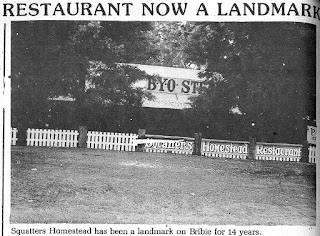Cook's Earliest Monument
Donna Holmes, BIHS past president
What connects an 18th century French chateau with the much-lauded English explorer Lieutenant James Cook, the French explorer Laperouse and W.H. Traill, author of the Queensland section of Picturesque Atlas of Australasia?
In the Christmas 1895 edition of The Queenslander was an article written by W.H. Traill entitled Cook's Earliest Monument and thanks to the wonderful online resource Trove (provided by the National Library of Australia) Traill's article can be viewed here.
Englishman W.H. Traill (1843-1902), journalist and author, described the first monument ever erected in honour of Captain Cook - not in Australia or England but in a secluded private park in France - a memorial of Cook's heroic voyages placed about the year 1794 by French admirer Jean-Joseph de Laborde.
Laborde's two sons accompanied the French explorer Laperouse on his voyage to New Holland and sadly, like Laperouse himself, were lost at sea.
W.H. Traill had travelled to France in the early 1890s and seen the monument. Later he conducted some research on the monument's history and owner. When Traill wrote up his findings, he realised his 1895 article would be the first account of the earliest monument to James Cook's courage and adventurous spirit.
While the whole article should to be read to understand W.H. Traill's enthusiasm for his topic, here is a small excerpt from the article to whet your interest.
Excerpt from Cook's Earliest Monument
W.H. Traill, 1895
"News came to Australia but the other day that the inhabitants of the Yorkshire hamlet which was the birthplace of James Cook are bestirring themselves to repair the dilapidations of the monument erected long ago in memory of the distinguished son of one of their old-time farm labourers. It is not, however, to this neglected structure that the title of this article refers. It is a singular fact - and it is still more singular that the circumstance should have escaped the researches of all Cook's biographers - that the earliest monument erected to commemorate his fame, and that which to this hour transcends all such memorials in beauty and costliness, owes its existence to the generous appreciation of a large-minded foreigner, and stands in secluded grandeur in the bosky recesses of a private park in France. . . . "
"There was special reason why banker de Laborde was so remarkably appreciative of the merits of Captain Cook that he thus anticipated even the countrymen of the great navigator in raising a memorial to immortalise his fame. Cook was killed at Hawaii (or Owhyhee, as it was then spelt) in 1778. Laborde bought Mereville six years later. But Cook's fame was already diffused years before his death, and the French Government had despatched the now almost equally celebrated and equally ill-fated La Perouse to emulate his career. With La Perouse on his early voyage sailed two of de Laborde's sons. . . ."
Reference:
Cook's Earliest Monument by W.H. Traill
The Queenslander, Sat 28 Dec 1895, p. 1222 http://nla.gov.au/nla.news-article21639281
Further reading:
An image of the monument "Le Cenotaphe de Cook" can be seen on the website of
Le Parc et le Chateau de Jeurre et ses Momuments
at http://www.parcdejeurre.fr/le-cenotaphe-de-cook-view-13-6.html
'Cook, James (1728–1779)', Australian Dictionary of Biography, National Centre of Biography, Australian National University, published first in hardcopy 1966, accessed online 30 June 2017 http://adb.anu.edu.au/biography/cook-james-1917
Wikipedia entry for Jean-Joseph de Laborde (1724-1794)
https://en.wikipedia.org/wiki/Jean-Joseph_de_Laborde
Wikipedia entry for Jean-Francois de Galaup, comte de Laperouse
https://en.wikipedia.org/wiki/Jean-Fran%C3%A7ois_de_Galaup,_comte_de_Lap%C3%A9rouse
EARLY MONUMENTS TO COOK
1778 - Stowe, Buckinghamshire, England - Captain Cook Memorial - By George Nugent Temple Grenville (1753-1813), 1st marquess of Buckingham (also 2nd Earl Temple 1779-1784).
Photos of Captain Cook's Monument, Stowe: The Elysian Fields at
http://faculty.bsc.edu/jtatter/cook.html
1781 - Vache Park, Chalfont St. Giles, Buckinghamshire, England - Memorial to Captain Cook - By Admiral Sir Hugh Palliser
Article: Patron of Captain Cook: an Admiral's foresight. The Age, Sat 21 Jun 1952, p. 10
http://nla.gov.au/nla.news-article205407114
Photos at http://www.chalfontstgiles.org.uk/CookMonument.htm
1794 - Chateau de Mereville, Mereville, Juine Valley, France - Le Cenotaphe de Cook - By Jean-Joseph de Laborde
1827 - Easby Moor, North Yorkshire - Captain Cook's Monument - by Robert Campion
https://en.wikipedia.org/wiki/Easby_Moor#Captain_Cook.27s_Monument
1874 - High Cross, intersection of Avoca, High, Belmere, and Perouse streets, Randwick, New South Wales - Statue of Captain Cook - By Captain Thomas Watson. Unveiled on 27 Oct 1874, the anniversary of Cook's birthday.
Article: Unveiling of a statue of Captain Cook. Empire (Sydney) Wed 28 Oct 1874, p. 2 http://nla.gov.au/nla.news-article60993986
Photos at http://monumentaustralia.org.au/themes/landscape/discovery/display/22869-captain-james-cook
Article: Captain T. Watson and his Captain Cook statues: a tribute to kindness. Pittwater Online News, issue 227, August 16-22, 2015. http://www.pittwateronlinenews.com/captain-watson-and-his-captain-cook-statue.php














